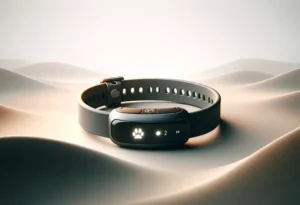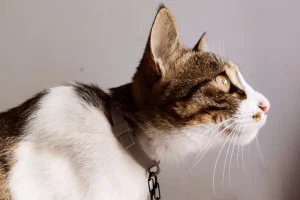If you’ve noticed your cat’s whiskers breaking, you might be wondering why this is happening. Let’s explore the reasons behind this common issue.
The Purpose of Whiskers
Whiskers are not just adorable accessories on a cat’s face – they actually serve a crucial purpose in helping our feline friends navigate their surroundings. Whiskers are incredibly sensitive and act as a cat’s built-in GPS system, helping them gauge the size of openings, detect changes in air currents, and even sense nearby objects without having to rely solely on their vision.
These amazing whiskers are deeply rooted in a cat’s face and are directly connected to sensory nerves, providing vital information about the environment around them. So, when you notice your cat’s whiskers breaking, it’s not just a cosmetic concern but a potential issue with their ability to effectively navigate and sense their surroundings.
Whisker Stress
Did you know that stress can impact your cat’s whiskers? Just like humans, cats experience stress, which can manifest in various ways, including weakened and brittle whiskers. Whisker stress can occur due to changes in their environment, such as moving to a new home, introducing a new pet, or experiencing loud noises that unsettle them.
To prevent whisker stress and ensure your cat’s whiskers remain healthy and intact, it’s important to create a safe and calm environment for them. Providing hiding spots, interactive toys, and a consistent routine can help alleviate stress and preserve those precious whiskers.
Bonus Tip: Regular grooming and a balanced diet can also contribute to the overall well-being of your cat, including the health of their whiskers.
Grooming Habits
Cats are meticulous groomers, often spending hours each day cleaning themselves. While this behavior is essential for their overall hygiene, it can inadvertently contribute to the breakage of their whiskers. When cats groom themselves, they use their paws to rub their faces, which can cause their whiskers to bend or break. Since whiskers are much thicker and stiffer than regular fur, this constant grooming can put stress on them, leading to breakage over time. To prevent excessive whisker breakage, make sure to provide your feline friend with a well-balanced diet, as proper nutrition can help improve the strength and health of their whiskers.
Environmental Factors
In addition to grooming habits, environmental factors can also play a role in the breakage of a cat’s whiskers. A cluttered living space with tight spaces or sharp corners can cause a cat’s whiskers to brush against surfaces frequently, leading to damage. Ensure that your cat has enough room to move around comfortably without constantly bumping into objects that could potentially harm their whiskers. Providing your cat with enriching toys and scratching posts can help redirect their natural urge to explore and play, reducing the chances of whisker breakage due to environmental hazards.
- Opt for wide and shallow food bowls to prevent whisker fatigue during feeding time.
- Avoid trimming your cat’s whiskers, as they serve important sensory functions for your pet.
- In case of excessive whisker breakage, consult with your veterinarian to rule out any underlying health issues that may be impacting your cat’s whiskers.
Nutritional Deficiencies
Are you wondering why your cat’s whiskers keep breaking? Well, one possible reason could be nutritional deficiencies. Just like humans, cats need a balanced diet to maintain healthy hair, including their whiskers. If your furry friend’s diet lacks essential nutrients like vitamins and minerals, their whiskers may become weak and prone to breakage. Make sure your cat is getting a well-rounded diet that includes protein, healthy fats, and vitamins like A and E to keep those whiskers strong and healthy.
Here is a list of nutrients that are essential for maintaining healthy cat whiskers: – Protein: Helps in the growth and maintenance of whiskers. – Vitamin A: Aids in the overall health and strength of hair follicles. – Omega-3 Fatty Acids: Keeps the hair follicles hydrated and prevents breakage. – Zinc: Supports skin health and hair growth.
Remember, a balanced diet is key to keeping your cat’s whiskers in top shape. Providing them with high-quality cat food that meets their nutritional needs can help prevent whisker breakage and keep your feline friend looking fabulous.
Medical Conditions
If your cat’s whiskers are breaking, it could be a sign of an underlying medical condition. Cats can suffer from issues like hypothyroidism or dermatitis, which can cause hair, including whiskers, to become weak and brittle. It’s essential to consult your veterinarian if you notice persistent whisker breakage to rule out any medical concerns.
Keep an eye out for other symptoms like itching, redness, or hair loss in addition to whisker breakage, as these could indicate a more serious condition. Your veterinarian can perform tests to diagnose any underlying issues and recommend appropriate treatment to help your cat’s whiskers regain their strength.
Remember, regular check-ups and prompt veterinary care are crucial for maintaining your cat’s overall health and well-being. Don’t hesitate to reach out to your vet if you have any concerns about your furry friend’s whiskers.
Age and Growth Cycle
Cat whiskers are more delicate than they might appear. As cats age, their whiskers can become more brittle and prone to breakage. Just like our hair, whiskers can also show signs of wear and tear over time. Keeping an eye on your cat’s whiskers and providing proper care can help prevent unnecessary breakage.##
Preventive Care
To ensure your cat’s whiskers stay healthy and intact, here are some helpful tips to follow: – Avoid Trimming: Resist the urge to trim your cat’s whiskers, as they serve a crucial sensory function. – Proper Nutrition: Providing a balanced diet rich in essential nutrients can help maintain strong and healthy whiskers. – Gentle Handling: Handle your cat with care, avoiding any rough tugging or pulling on their whiskers. – Regular Grooming: Brushing your cat regularly can help prevent matting, which can put strain on their whiskers. – Stress Management: Minimizing stress in your cat’s environment can also contribute to overall whisker health.
Keep these preventive care tips in mind to promote the well-being of your feline friend and keep their whiskers in top shape.
Fun Fact: The Technical Term
Did you know that a cat’s whiskers are scientifically called vibrissae? These specialized sensory hairs are not just for show; they play a crucial role in a cat’s hunting and navigating abilities. Vibrissae are deeply rooted in a cat’s sensitive nerve endings, providing them with valuable information about their surroundings. They help cats detect changes in their environment, assess the size of openings, and even sense the subtle movements of prey. So, when a cat’s whiskers break, it can affect their perception and cause temporary disorientation.
Discovering the Breaks
There are several reasons why a cat’s whiskers might break. One common cause is physical trauma or accidents that can result in the whiskers being bent, twisted, or even broken off. Another reason could be due to grooming habits; cats are meticulous groomers and may accidentally damage their whiskers during the grooming process. Additionally, whiskers can become brittle with age, making them more prone to breakage. It’s essential to ensure your cat’s environment is safe and free of potential hazards to reduce the risk of whisker breakage.
Helpful Tip: Regularly inspect your cat’s whiskers for any signs of damage or breakage, and consider consulting your veterinarian if you notice frequent breakage or abnormalities.
Remember, a cat’s whiskers are not just there for looks; they are crucial for a cat’s sensory perception and overall well-being. So, it’s essential to provide the necessary care and attention to help keep their whiskers intact and functioning properly.
Alex, a passionate animal lover, has experience in training and understanding animal behavior. As a proud pet parent to two dogs and three cats, he founded AnimalReport.net to share insights from animal experts and expand his knowledge of the animal kingdom.




